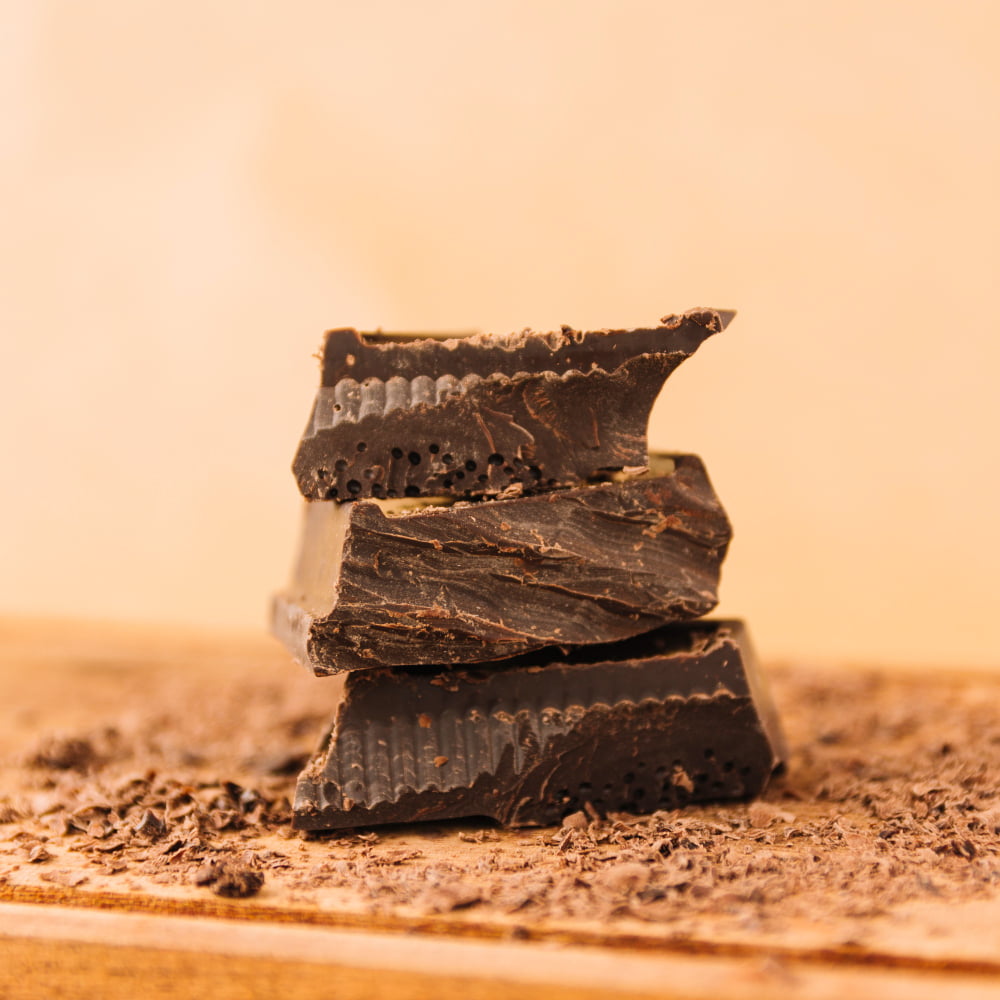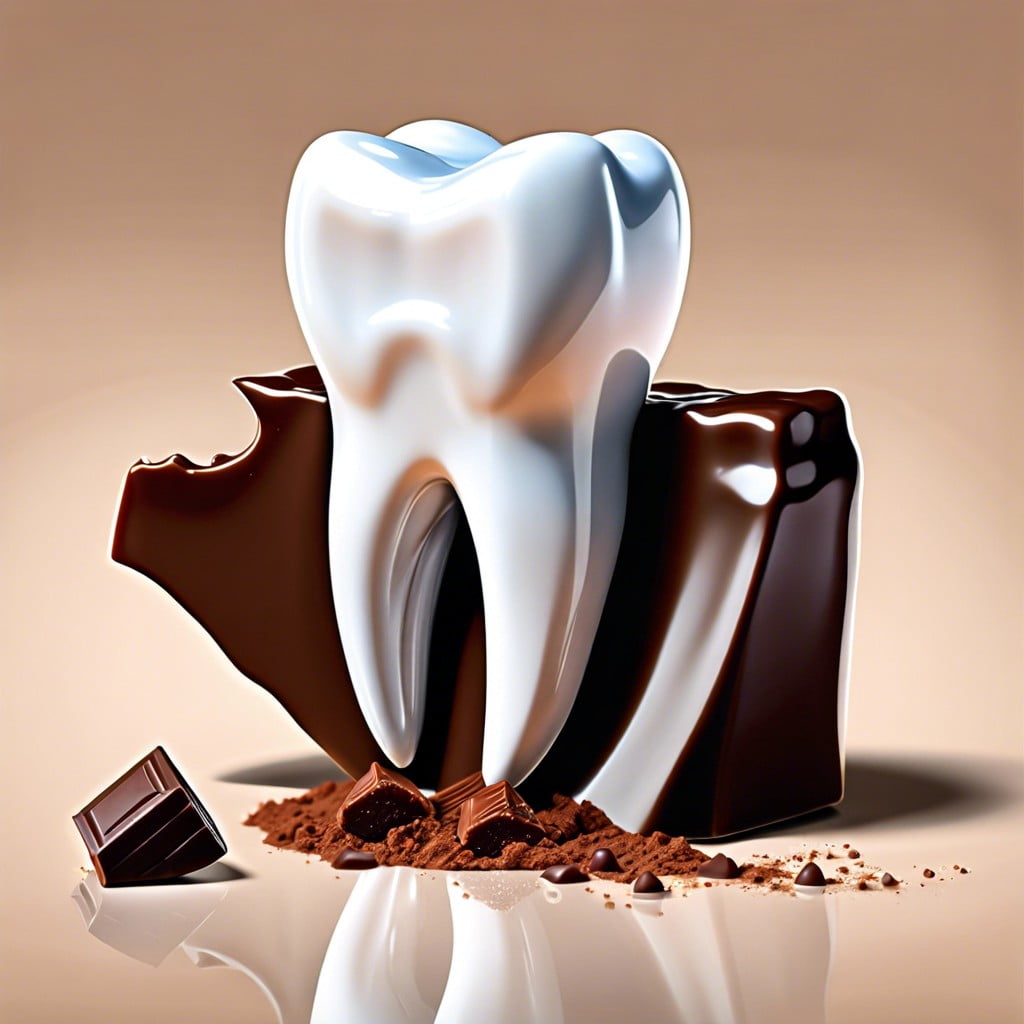This article provides essential information on the processes involved in making chocolate, from bean to bar, and offers tips on how to best enjoy its rich flavors.
Key takeaways:
- Dark, milk, white, and ruby are different types of chocolate.
- The production process of chocolate involves harvesting, fermenting, drying, roasting, grinding, conching, tempering, and molding.
- Consuming chocolate in moderation may offer health benefits, but it’s important to balance intake due to the high sugar content.
- Recent developments include reducing sugar content, improving flavor profiles, sustainability, ethical sourcing, and 3D printing of chocolate.
- Dark chocolate’s flavonoids may contribute to heart health and ongoing research explores chocolate’s effects on cognitive function and mood.
Inside
History of Chocolate

Chocolate’s origins trace back to ancient Mesoamerica where the cacao tree, Theobroma cacao, flourished. The Olmecs, as early as 1500 BCE, were likely the first to cultivate cacao, which later Mayans and Aztecs prized not just as a food, but for its use in rituals and as currency. The bitter concoction they drank, often combined with spices or chilli, is a far cry from modern sweetened chocolate.
Following European discovery of the Americas, cacao made its way to Europe in the 16th century where, over time, sugar was added to counteract its natural bitterness. This pivotal moment led to the popularization of chocolate across the continent, originally as a drink for the elite.
The chocolate bar we know today didn’t exist until the 19th century. Key developments included the invention of the cocoa press by Coenraad van Houten, which made it possible to separate cocoa butter from the cocoa solids, making chocolate more consistent and easier to mold. Later advancements, such as the addition of powdered milk by Swiss chocolatier Daniel Peter, gave birth to milk chocolate.
Throughout its history, the demand for chocolate has often been a driver of both economic growth and, regrettably, exploitation. Today, ethically sourced and made chocolate is gaining in prominence as consumers become more conscientious about where and how their chocolate is made.
Types of Chocolate
Dark chocolate, characterized by its high cacao content and minimal milk, ranges from semi-sweet to bittersweet, with varying degrees of sugar added to balance the natural bitterness of cacao.
Milk chocolate, known for its creamy texture and sweet flavor, incorporates milk powder or condensed milk with sugar and a lower percentage of cacao compared to its darker counterpart.
White chocolate, devoid of cacao solids, relies on cocoa butter for its chocolatey essence and is combined with milk and sugar, resulting in a subtle cocoa flavor and a rich, velvety texture.
Ruby chocolate, the newest category recognized by the chocolate industry, boasts a naturally pink hue and a unique berry-like taste, derived from unfermented cacao beans treated with precise acidity levels.
Couverture chocolate, a high-quality class of chocolate with a higher ratio of cocoa butter, is designed specifically for professional use in fine confectionery, tempering smoothly for a glossy finish and crisp snap.
Infused chocolates expand the flavor spectrum by incorporating elements such as spices, herbs, fruit essences, and exotic salts, thus creating a vast array of taste experiences for the adventurous palate.
Production of Chocolate
Cacao trees produce pods containing seeds that are the primary ingredient for chocolate. The production process comprises several key steps:
- Harvesting: Workers manually collect ripe pods from cacao trees, typically using machetes.
- Fermenting: The seeds, surrounded by a sweet pulp, are removed from pods and fermented for several days. Fermentation is crucial for developing the chocolates’ flavor.
- Drying: Post fermentation, seeds are dried, reducing moisture content and preventing mold growth.
- Roasting: Drying is followed by roasting, where the flavor further develops and the color darkens.
- Grinding: Roasted seeds are ground into chocolate liquor, a paste that contains both cocoa solids and cocoa butter.
- Conching: Chocolate liquor is blended with additional ingredients and continuously mixed, refining the chocolate’s texture and taste.
- Tempering: The chocolate is carefully cooled and warmed in a controlled process to stabilize the cocoa butter crystals, ensuring a glossy finish and proper snap.
- Molding: Finally, the tempered chocolate is poured into molds, cooled, and solidified into the final product.
These steps can vary slightly depending on the type of chocolate being produced and the manufacturer’s preferences in creating unique flavors and textures.
Health Effects of Chocolate
Consuming chocolate in moderation may offer several health benefits, attributed largely to its rich array of bioactive compounds, such as flavonoids and theobromine.
Flavonoids, found in higher concentrations in dark chocolate, are known for their antioxidant and anti-inflammatory properties. They may contribute to heart health by improving blood flow, lowering blood pressure, and reducing the risk of heart disease.
Theobromine, another compound prevalent in chocolate, can help improve mood by stimulating the release of endorphins, the body’s natural feel-good chemicals.
However, it’s crucial to balance chocolate intake, especially considering the high sugar content in many chocolate products, which can negate these health benefits. Choosing chocolate with a higher cocoa content and lower amounts of added sugars is advisable for maximizing the positive aspects.
Moreover, the calorie density of chocolate means that overconsumption can lead to weight gain, so moderation remains key.
It’s also worth noting that individual reactions to chocolate can vary, with some people sensitive to components like caffeine or experiencing migraines from chocolate consumption. Therefore, personal tolerance levels should guide intake.
Recent Developments in Chocolate Research
Emerging studies are shedding light on chocolate’s potential benefits and innovations in production. Researchers have discovered novel ways to improve the health profile of chocolate by reducing sugar content without compromising taste. Techniques such as using fruit juice and stevia as sweeteners have been explored.
Additionally, advancements in the fermentation process are leading to enhanced flavor profiles and the development of fine or “artisanal” chocolates.
Sustainability and ethical sourcing in chocolate production have gained momentum, leading to the creation of more transparent supply chains. Studies have also focused on the impacts of cacao farming on the environment and ways to enhance crop yields without added environmental strain.
Another area of active research is the 3D printing of chocolate, which opens possibilities for customized confections and could revolutionize the culinary landscape.
In the realm of health, recent research has delved deeper into the cardiovascular benefits associated with dark chocolate’s flavonoids, suggesting potential for reduced risk of heart disease. There are also ongoing studies examining chocolate’s influence on cognitive function, mood, and the potential anti-inflammatory effects that could contribute to overall well-being.




